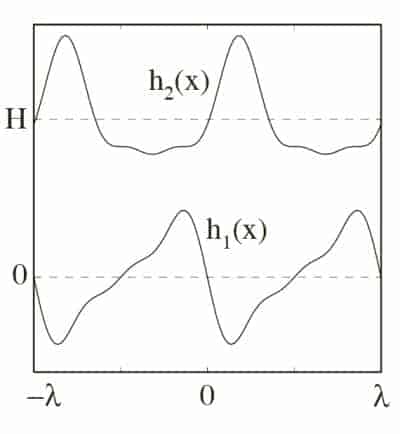The Casimir effect, a cornerstone of quantum field theory, is a fascinating phenomenon that arises from the inherent fluctuations of vacuum states. It manifests as an attractive force between uncharged conductive plates positioned in a vacuum, compelling researchers to investigate its implications beyond theoretical physics. One intriguing application of this effect is the concept of Casimir ratchets—microscopic engines that harness vacuum fluctuations to perform work in a seemingly paradoxical manner. This article delves into the key principles of Casimir ratchets and their potential to revolutionize our understanding of nanoscale engines and energy conversion.
At the heart of the Casimir effect is the notion that even in a vacuum, electromagnetic fields are not absent, but instead are characterized by an incessant ebb and flow of virtual particles. This phenomenon is encapsulated in the fluctuation-dissipation theorem, which indicates that these constant fluctuations can produce measurable physical effects. When two plates are brought close together, the modes of the vacuum fluctuations between them are altered, leading to a net attractive force. This effect was first predicted by Dutch physicist Hendrik Casimir in 1948 and has since catalyzed a myriad of explorations into quantum technologies and fundamental physics.
To comprehend the operative mechanism of Casimir ratchets, one must first grasp the classical concept of a ratchet. In macroscopic systems, a ratchet is a mechanical device that restricts backward motion, thus allowing for directed motion in one direction when subjected to an asymmetric force. In a quantum context, Casimir ratchets leverage the unique properties of quantum vacuum fluctuations to create a similar unidirectional motion. The interplay between these fluctuations and the spatial configuration of the ratchet system results in energy transfer, where asymmetric potentials lead to a net displacement of particles or mechanical components.
Several research endeavors have explored the fundamental design principles of Casimir ratchets. The asymmetry can be introduced through the geometry of the system or the arrangement of materials employed in the construction of the ratchet. For instance, by manipulating the shapes of the surfaces—such as the introduction of periodic corrugations or ratchet-like structures—scientists can exploit the spatial distribution of vacuum fluctuations. These modifications can engender a non-equilibrium state, which is essential for the emergence of deterministic motion despite the randomness inherent in quantum fluctuations.
A key feature of Casimir ratchets is their potential for work output without the need for external energy sources. By tapping into vacuum fluctuations, these engines could operate under conditions where traditional energy sources are untenable. This not only promises a shift in energy paradigms but implies that novel applications could arise within contexts such as nanoscale machinery, biosensors, and energy harvesting systems. The ability to convert vacuum energy directly into useful work offers an enticing perspective on energy sustainability, especially in light of growing global demand for efficient energy solutions.
The implications of Casimir ratchets extend into interdisciplinary realms, encompassing physics, engineering, and material science. As research progresses, a variety of platforms may be explored for implementation. For example, nanostructured materials can enhance the interaction between vacuum fluctuations and the mechanical components of a ratchet. Advances in fabrication techniques at the nanoscale could yield structures that are tailored specifically for optimized performance and functionality, enabling the realization of complex ratcheting systems capable of performing work tasks.
Moreover, the advent of quantum technology has paved the way for enhanced exploration of the Casimir effect and its applications. Quantum computers and novel electronic devices could benefit from harnessing vacuum fluctuations to perform tasks with unprecedented efficiency. The integration of Casimir ratchets in quantum circuits or as components within nanomachines presents a compelling avenue for innovation, with the potential to redefine aspects of computation and information transfer.
While the theoretical underpinnings of Casimir ratchets are robust, challenges remain in their practical implementation. One notable issue is the inherent difficulty in maintaining the required conditions for effective operation at the nanoscale. Thermal noise and environmental perturbations may obscure the delicate balance required for optimal function, necessitating further investigation into materials and designs that can alleviate these constraints. Additionally, scaling up the principles of Casimir ratchets to functional macroscopic devices remains an area ripe for exploration.
As researchers continue to probe the depths of quantum physics, the concept of Casimir ratchets emerges as a key player in the quest for revolutionary energy solutions. The mesmerizing intersection of quantum mechanics and practical engineering presents tantalizing possibilities. Furthermore, the exploration of these tiny engines invites profound philosophical questions regarding the nature of energy, work, and the fabric of spacetime itself. What does it mean to harness energy from the vacuum? How does this shift our understanding of thermodynamics and energy efficiency?
In conclusion, Casimir ratchets epitomize a marriage of theory and application, where the abstract principles of quantum fluctuations manifest as tangible devices. Their potential to provide novel insights and solutions for energy conversion and technological advancement cannot be overstated. As the boundaries of quantum physics continue to expand, the implications of these tiny engines will persist in piquing curiosity and inspiring further inquiry, promising a future where the enigmatic characteristics of the quantum realm are harnessed for practical use. The journey into this quantum frontier is just beginning, and the unfolding narrative surrounding Casimir ratchets offers a compelling narrative within the annals of modern physics.












